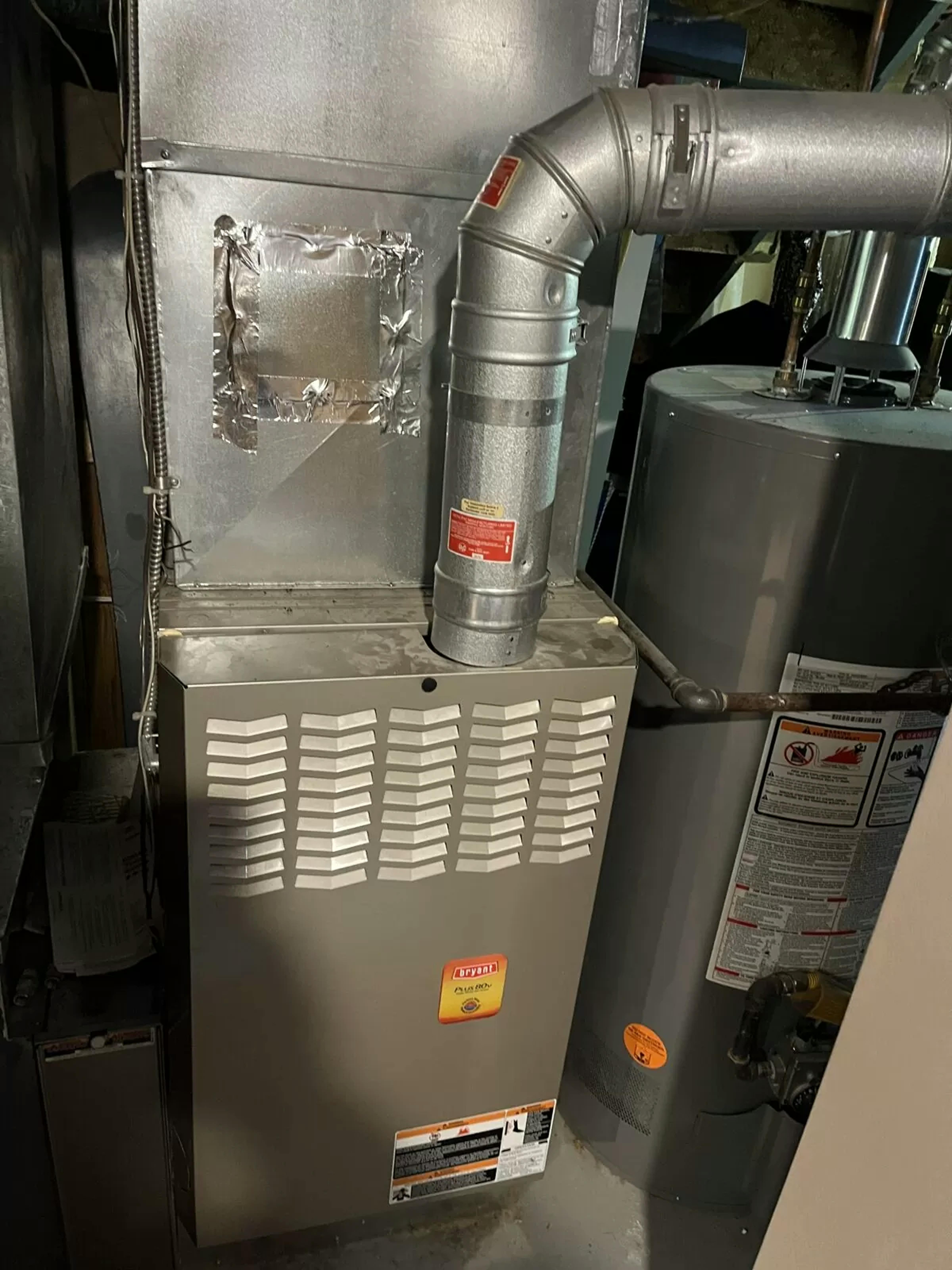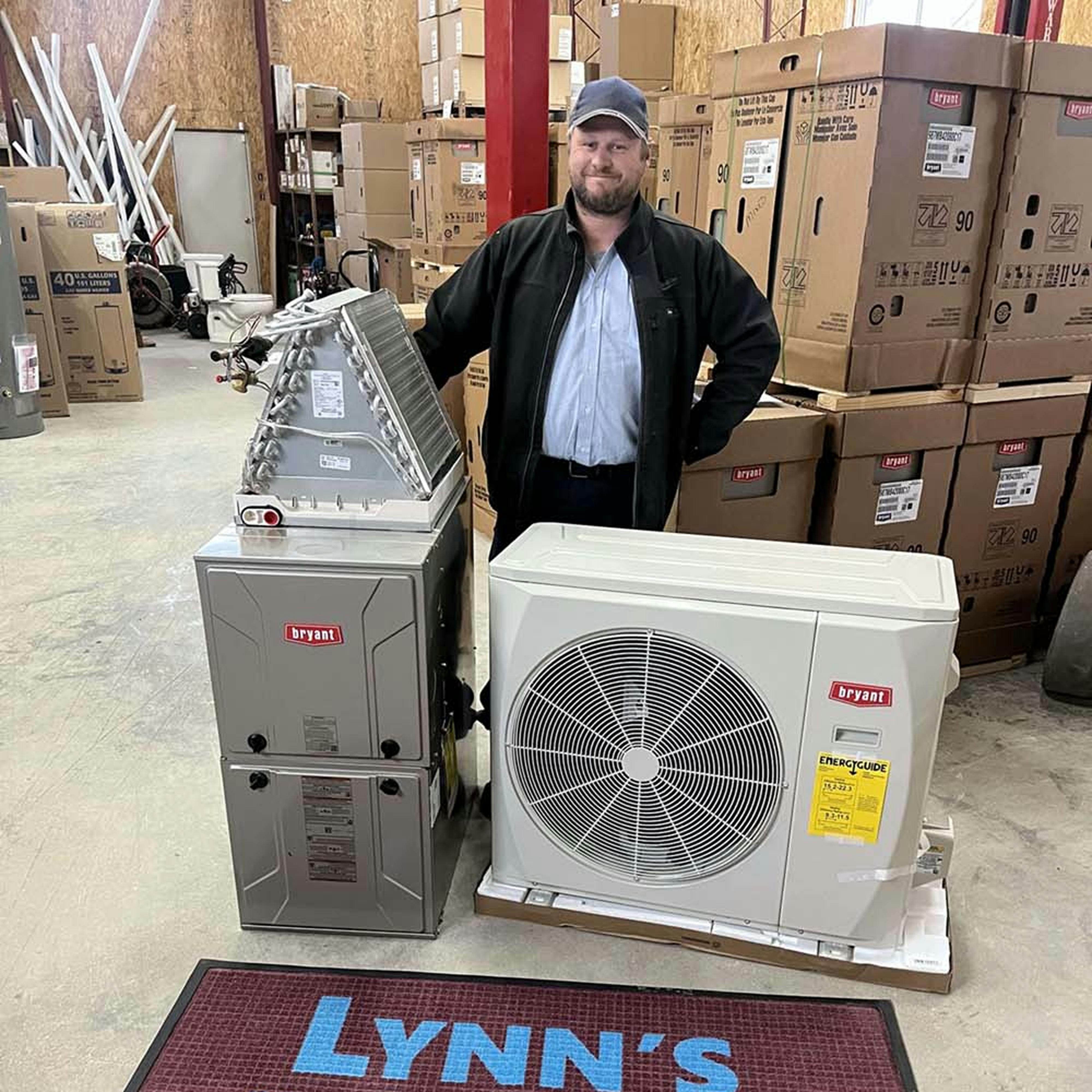Expert Heating Solutions
Furnace Installation in Winnipeg
A properly functioning furnace is essential for any homeowner. Without one, it becomes difficult to heat your space.
When installing a new furnace, having a reputable company matters. Our experts will showcase various models to find the best energy efficient option that suits your needs.
Lynn's Heating & Cooling ensures the installation process is straightforward and cost-effective. We have experience furnace installers with years of experience. We also provide furnace repair and maintenance service.
We are available 24 hours a day, seven days a week. Call us today.
-
Finding The Right Furnace
The first step is ensuring you have the right furnace and equipment. A staff member from Lynn’s will work with you to choose the perfect furnace model. After we help you find the right furnace, it’s time to install your new furnace. Our technicians will lay floor coverings to protect your home and the area around the furnace will be ready.
-
Safety Checks
Safety checks will occur before and during the installation process. Generally, this involves shutting off electrical breakers that run to the furnace, turning off gas or fuel lines and removing any hazardous materials from the work area. At Lynn's, our technicians work as a team for safety reasons.
-
Removing Old Furnace
The old furnace will be removed. Our team will disconnect any venting, electrical wiring, gas lines, ductwork or anything else connected to the central unit. Once removed, we clean the dirt or dust and entry points to the ductwork and the evaporator coil.
-
Furnace Installation
The time has come to install the new furnace. Your technician will adjust the plenum, flue lining, electrical lining and other important elements to ensure proper airflow. A transition that runs to the plenum will be built to prevent air leakage — it is a metal sheet that will be cut, bent, or folded to create proper airflow.
-
Final Adjustments
After the unit is in place, adjustments will occur to ensure it is plumb and level. A rubber pad placed under the furnace prevents the metal from pulling moisture out of the ground and rusting. Reconnecting and sealing the unit in place with a caulk gun is the next step. HVAC caulk resists the pressures of the furnace system. Electrical and fuel lines are also reconnected.
Furnace Types
Types of Furnaces
There are several type of furnaces, which come in many shapes and sizes. The four most common power sources are the following:
- Natural Gas Furnace.
- These are popular across the country. They are cost-efficient because of their low energy usage. However, they have shorter lifespans, which can lead to consistent replacement fees.
- Oil Furnace.
- These are readily available and can be easily paired with a smart thermostat to control your home's temperature. The downsides are they need to be installed outside your home, and the oil tank needs to be refilled regularly for it to work.
- Electric Furnace.
- These are great for the environment because they do not emit carbon emissions and can be powered by renewable sources. If you choose this option, be aware of the high costs.
- Propane Furnace.
- These are an economical option which boasts high energy efficiency. They do need to be installed and inspected regularly by a professional contractor.

Warranty Info
Warranty Information For Our Furnaces
Feel free to ask questions about the warranty policy during your furnace installation. It can help you cover furnace service and replacement costs.
Furnaces always come with a manufacturer's warranty. They cover faulty parts or manufacturing defects. It applies to certain scenarios, so be sure to review your policy.
Furnace installation warranties are issued by your contractor. Lynn's policy covers the system if it is damaged during the installation process or performance issues related to installation. Ask a team member for a complete copy of our policy.
Most brands offer extended warranties to add a few more years of coverage to your manufacturer's warranty.
The cost of installing a furnace in Winnipeg typically ranges from $2,800 to $6,000. Several factors can influence the final price. You might need to repair system components, add ductwork, or make other modifications to ensure the new furnace or heating solution operates efficiently. Additionally, if a new thermostat or other components are required for compatibility with your new furnace, your estimate may fall towards the higher end of this range.
Replacing a furnace is a labor-intensive and challenging task that involves numerous considerations. It's strongly advised against attempting to replace a furnace on your own, as it is a significant investment best handled by professionals.
Installing your own heat source can increase the risk of carbon monoxide leaks or other air quality issues in your home. Therefore, it's always advisable to consult with a professional before installing your own furnace.
Although some retailers sell gas-fired appliances directly to the public, the Canadian Gas Code mandates that a gas permit is required for any appliance replacement or installation. This work must be performed by a qualified furnace installer. Gas permits are issued only to licensed and bonded gas contractors.
The average lifespan of most furnaces and heating systems is about 15 to 20 years. However, boilers and electric furnaces typically last 20 to 30 years. Various factors can either shorten or extend the life of your furnace.
Running your heating system 24/7 is not problematic if outdoor conditions necessitate constant indoor warmth. For many households, maintaining a consistent indoor temperature is essential for winter survival. However, be mindful that this can cause additional wear and tear on your heating system.
When choosing a furnace, consider the following factors:
- Home size: Larger homes need bigger furnaces. The more square footage you have, the larger the furnace you will need.
- Energy efficiency: Furnaces are rated on their annual fuel utilization efficiency (AFUE). The larger the percentage, the better your home is heated.
- Comfort: Understanding your needs is an important part of heating your home. The technicians at Lynn's will ask for your input to recommend the correct products.
- Budget: A new furnace is a costly investment, which includes equipment, labour, permit fees, and possible ductwork or ventilation modifications. We work with you to pick the best option for you and your needs.
A new furnace comes with a plethora of benefits, including:
- Efficiency: Furnaces are less efficient as they age. Because they have to work harder, they consume more energy, which makes for higher bills.
- Better airflow: A new furnace makes it easier for your home to circulate quality air through the ventilation system.
- Lower repair costs: Warranties cover newer furnaces. A new furnace means fewer visits from your contractor.
- Less noise: Compared to their counterparts, newer furnaces are fairly quiet.
Send an Expert
Need fast, reliable plumbing or HVAC solutions? Our experts are ready to help. Fill out this form and we'll contact you promptly to discuss your needs and provide a free, no-obligation quote.

